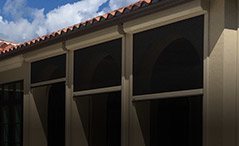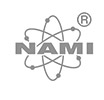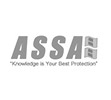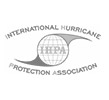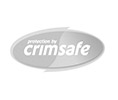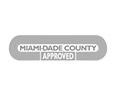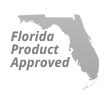Key Items
According to FEMA, the Federal Emergency Management Agency, a branch of the U.S Department of Homeland Security, “A well-thought-out plan of action for you and your family can go a long way toward reducing potential suffering from any type of disaster that could strike.”….“Household emergency plans should be kept simple. The best emergency plans are those that are easy to remember.”“Maintaining a link to the outside can be crucial. Keep a battery-operated radio and extra batteries on hand.”“Post emergency numbers (fire, police, ambulance) by the phone. Teach children how to call 911 for help.”…. “Identify family meeting places in case you are separated. Choose a place in a building or a park outside your neighborhood. Everyone should be clear about this location.”
“Develop an emergency communication plan. Ask an out-of-state relative or friend to serve as the family’s contact. Make sure everyone knows the telephone number of this contact.”
Below is a list of emergency supplies, or, items that you will need other than food and water (it is now recommended to have 5 to 7 days supply of food and water for each member of your family, including pets).
Batteries
 Rechargeable batteries save money and resources and often are the best choice for many uses. But they are best when matched to the right applications and there are some instances when they are not recommended. Why Rechargeable Batteries Are Good To Use • Save Money – While rechargeable batteries cost more initially, they can be reused hundreds of times and last for years, if used properly. • Protect the Environment – Batteries contain corrosive materials and heavy metals. Their manufacture, transportation and disposal can impair human health and the environment. In California, batteries are banned from landfills and must be either recycled or handled as hazardous waste. Using rechargeable batteries greatly reduces the number of overall batteries required and disposed of. • Conserve Resources, Prevent Waste – Because rechargeable batteries can be used over and over, far fewer need to be manufactured and transported than when using single-use disposable batteries.
Rechargeable batteries save money and resources and often are the best choice for many uses. But they are best when matched to the right applications and there are some instances when they are not recommended. Why Rechargeable Batteries Are Good To Use • Save Money – While rechargeable batteries cost more initially, they can be reused hundreds of times and last for years, if used properly. • Protect the Environment – Batteries contain corrosive materials and heavy metals. Their manufacture, transportation and disposal can impair human health and the environment. In California, batteries are banned from landfills and must be either recycled or handled as hazardous waste. Using rechargeable batteries greatly reduces the number of overall batteries required and disposed of. • Conserve Resources, Prevent Waste – Because rechargeable batteries can be used over and over, far fewer need to be manufactured and transported than when using single-use disposable batteries.
Candles
 Candle safety tips and safety candle holders should be foremost when using candles. Once considered emergency items in case of power outages (and they still are), candles have emerged from the drawer, to take center spot in the front room. And they’ve done it in style – candles have become the most affordable way to add atmosphere to a room, while enhancing the home’s decor. There’s an abundance of candle variety and sizes on the market, those that can fill a room with pleasant fragrances or candles that simply add grace and style to the dining table. From small tea lights to keep a fondue warm, to tall tapers for the table or floating candles for the tub – there are candles for every type of use and holder.
Candle safety tips and safety candle holders should be foremost when using candles. Once considered emergency items in case of power outages (and they still are), candles have emerged from the drawer, to take center spot in the front room. And they’ve done it in style – candles have become the most affordable way to add atmosphere to a room, while enhancing the home’s decor. There’s an abundance of candle variety and sizes on the market, those that can fill a room with pleasant fragrances or candles that simply add grace and style to the dining table. From small tea lights to keep a fondue warm, to tall tapers for the table or floating candles for the tub – there are candles for every type of use and holder.
First Aid
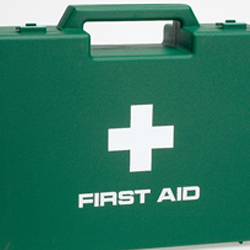 Where It Is Needed Most Support the urgent needs of the American Red Cross mission, whether it is responding to a disaster, collecting lifesaving blood, teaching skills to save a life, or assisting military members and their families during emergencies.
Where It Is Needed Most Support the urgent needs of the American Red Cross mission, whether it is responding to a disaster, collecting lifesaving blood, teaching skills to save a life, or assisting military members and their families during emergencies.
Flashlights
 A flashlight (torch in British English) is a hand-held portable electric-powered light source. Usually the light source is a small incandescent light bulb or light-emitting diode (LED). A typical flashlight consists of a light bulb mounted in a reflector, a transparent cover (called a lens) to protect the light source and reflector, a battery, and a switch. These are supported and protected by a case. The invention of the dry cell and miniature incandescent electric light bulbs made the first battery-powered flashlights possible around 1899. Today flashlights use mostly incandescent lamps or light-emitting diodes and run on disposable or rechargeable batteries. Some are powered by the user turning a crank or shaking the lamp, and some are powered by solar panels. In addition to the general-purpose hand-held flashlight, many forms have been adapted for special uses. Head or helmet-mounted flashlights designed for miners and campers leave the hands free. Some flashlights can be used underwater or in flammable atmospheres.
A flashlight (torch in British English) is a hand-held portable electric-powered light source. Usually the light source is a small incandescent light bulb or light-emitting diode (LED). A typical flashlight consists of a light bulb mounted in a reflector, a transparent cover (called a lens) to protect the light source and reflector, a battery, and a switch. These are supported and protected by a case. The invention of the dry cell and miniature incandescent electric light bulbs made the first battery-powered flashlights possible around 1899. Today flashlights use mostly incandescent lamps or light-emitting diodes and run on disposable or rechargeable batteries. Some are powered by the user turning a crank or shaking the lamp, and some are powered by solar panels. In addition to the general-purpose hand-held flashlight, many forms have been adapted for special uses. Head or helmet-mounted flashlights designed for miners and campers leave the hands free. Some flashlights can be used underwater or in flammable atmospheres.
Matches
 A match is a tool for starting a fire. Typically, modern matches are made of small wooden sticks or stiff paper. One end is coated with a material that can be ignited by frictional heat generated by striking the match against a suitable surface. Wooden matches are packaged in matchboxes, and paper matches are partially cut into rows and stapled into matchbooks. The coated end of a match, known as the match “head,” contains either phosphorus or phosphorus sulfide as the active ingredient and gelatin as a binder. There are two main types of matches: safety matches, which can be struck only against a specially prepared surface, and strike-anywhere matches, for which any suitably frictional surface can be used. Some match-like compositions, known as electric matches, are ignited electrically and do not make use of heat from friction.
A match is a tool for starting a fire. Typically, modern matches are made of small wooden sticks or stiff paper. One end is coated with a material that can be ignited by frictional heat generated by striking the match against a suitable surface. Wooden matches are packaged in matchboxes, and paper matches are partially cut into rows and stapled into matchbooks. The coated end of a match, known as the match “head,” contains either phosphorus or phosphorus sulfide as the active ingredient and gelatin as a binder. There are two main types of matches: safety matches, which can be struck only against a specially prepared surface, and strike-anywhere matches, for which any suitably frictional surface can be used. Some match-like compositions, known as electric matches, are ignited electrically and do not make use of heat from friction.
Radio
 NOAA Weather Radio All Hazards (NWR) is a nationwide network of radio stations broadcasting continuous weather information directly from the nearest National Weather Service office. NWR broadcasts official Weather Service warnings, watches, forecasts and other hazard information 24 hours a day, 7 days a week.
NOAA Weather Radio All Hazards (NWR) is a nationwide network of radio stations broadcasting continuous weather information directly from the nearest National Weather Service office. NWR broadcasts official Weather Service warnings, watches, forecasts and other hazard information 24 hours a day, 7 days a week.
Water
 Safety of Drinking Water If Flooding Occurs Use bottled water that has not been exposed to flood waters if it is available. If you don’t have bottled water, you should boil water to make it safe. Boiling water will kill most types of disease-causing organisms that may be present. If the water is cloudy, filter it through clean cloths or allow it to settle, and draw off the clear water for boiling. Boil the water for one minute, let it cool, and store it in clean containers with covers. If you can’t boil water, you can disinfect it using household bleach. Bleach will kill some, but not all, types of disease-causing organisms that may be in the water. If the water is cloudy, filter it through clean cloths or allow it to settle, and draw off the clear water for disinfection. Add 1/8 teaspoon (or 8 drops) of regular, unscented, liquid household bleach for each gallon of water, stir it well and let it stand for 30 minutes before you use it. Store disinfected water in clean containers with covers. If you have a well that has been flooded, the water should be tested and disinfected after flood waters recede. If you suspect that your well may be contaminated, contact your local or State health department or agriculture extension agent for specific advice.
Safety of Drinking Water If Flooding Occurs Use bottled water that has not been exposed to flood waters if it is available. If you don’t have bottled water, you should boil water to make it safe. Boiling water will kill most types of disease-causing organisms that may be present. If the water is cloudy, filter it through clean cloths or allow it to settle, and draw off the clear water for boiling. Boil the water for one minute, let it cool, and store it in clean containers with covers. If you can’t boil water, you can disinfect it using household bleach. Bleach will kill some, but not all, types of disease-causing organisms that may be in the water. If the water is cloudy, filter it through clean cloths or allow it to settle, and draw off the clear water for disinfection. Add 1/8 teaspoon (or 8 drops) of regular, unscented, liquid household bleach for each gallon of water, stir it well and let it stand for 30 minutes before you use it. Store disinfected water in clean containers with covers. If you have a well that has been flooded, the water should be tested and disinfected after flood waters recede. If you suspect that your well may be contaminated, contact your local or State health department or agriculture extension agent for specific advice.
Whistle
 The whistle has its roots dating back to ancient China, where night watchmen would blow into the tops of acorns to alert the towns to invading Mongolians, in the third century.[citation needed] In ancient Egypt two blades of the papyrus plant along the Nile river were held together in between the palms. By blowing into the palms the papyrus leaves would make a loud vibrant sound
The whistle has its roots dating back to ancient China, where night watchmen would blow into the tops of acorns to alert the towns to invading Mongolians, in the third century.[citation needed] In ancient Egypt two blades of the papyrus plant along the Nile river were held together in between the palms. By blowing into the palms the papyrus leaves would make a loud vibrant sound


